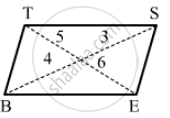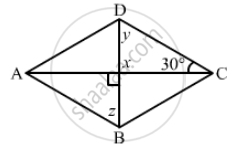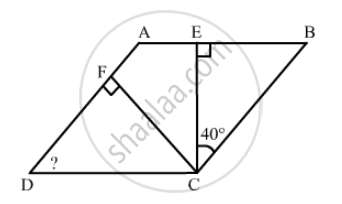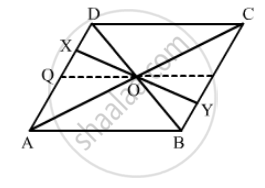Advertisements
Advertisements
प्रश्न
Can the following figure be parallelogram. Justify your answer.

उत्तर
\[\text{ No, This is because the diagonals do not bisect each other } .\]
APPEARS IN
संबंधित प्रश्न
The following figure is parallelogram. Find the degree values of the unknown x, y, z.

In a parallelogram ABCD, ∠D = 135°, determine the measure of ∠A and ∠B.
The perimeter of a parallelogram is 150 cm. One of its sides is greater than the other by 25 cm. Find the length of the sides of the parallelogram.
Find the angles marked with a question mark shown in Fig. 17.27

Diagonals of parallelogram ABCD intersect at O as shown in the following fegure. XY contains O, and X, Y are points on opposite sides of the parallelogram. Give reasons for each of the following:
(i) OB = OD
(ii) ∠OBY = ∠ODX
(iii) ∠BOY = ∠DOX
(iv) ∆BOY ≅ ∆DOX
Now, state if XY is bisected at O.

In a parallelogram ABCD, AB = 10 cm, AD = 6 cm. The bisector of ∠A meets DC in E, AEand BC produced meet at F. Find te length CF.
Which of the following statement is true for a rhombus?
It has two pairs of equal sides.
Which of the following statement is true for a rhombus?
It has only two pairs of equal sides.
Diagonals PR and QS of a rhombus PQRS are 20 cm and 48 cm respectively. Find the length of side PQ.
Construct a rhombus whose side is 5 cm and one angle is of 60°.
